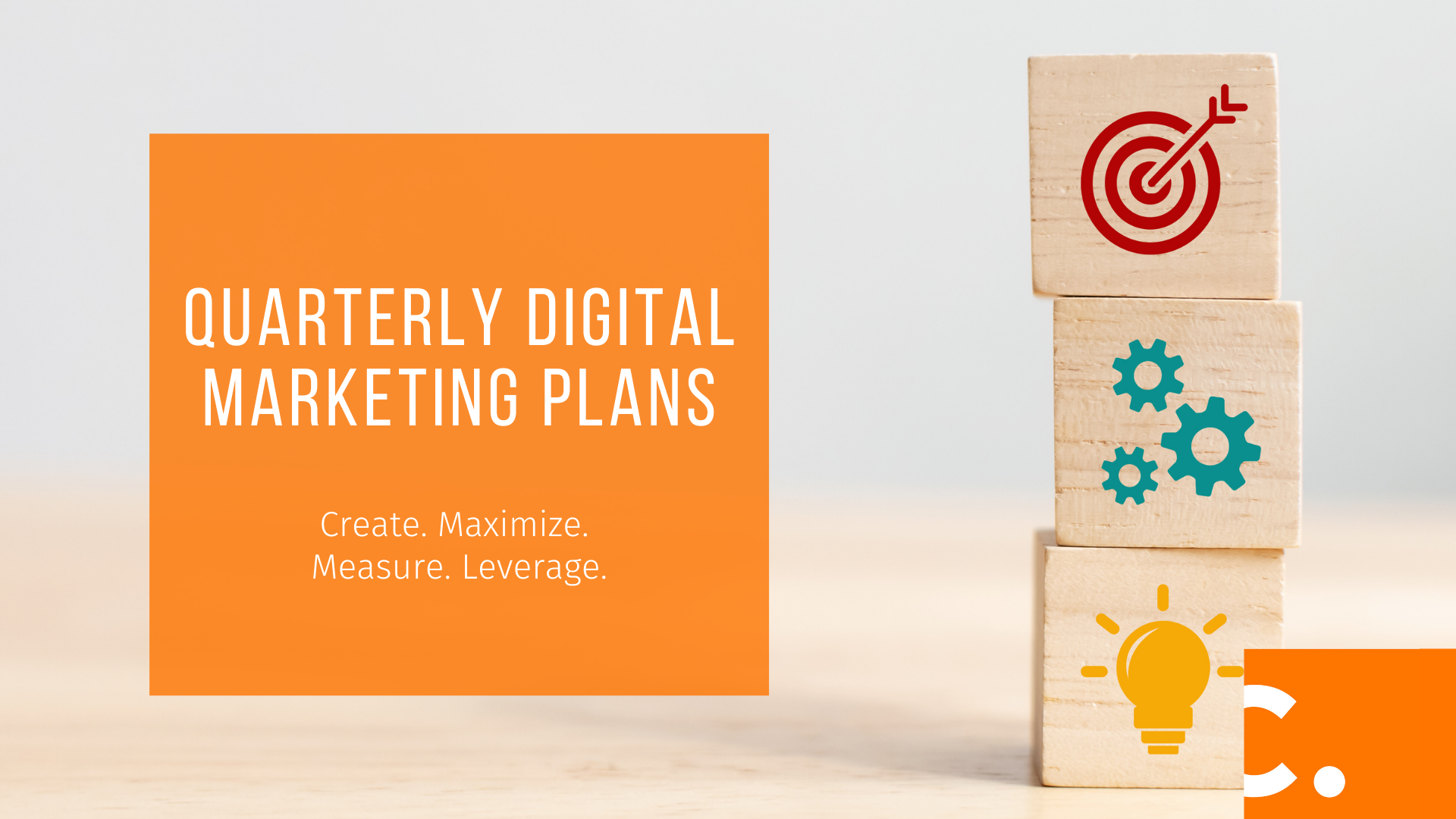
When it comes to developing a quarterly digital marketing plan, it’s important to understand your business’s position within the market, any time-sensitive objectives you want to focus on, what your budget looks like, and how you will determine your return on investment (ROI).
Let’s talk more about what it takes to create a quarterly digital marketing plan!
Market Positioning is Key
Before you sit down to develop your next quarterly digital marketing plan, you’ll want to make sure you’re aware of where your business sits in its current state. You’ll want to assess your competitors in the market and what perceptions your existing clients have of your business - doing so will allow you to identify new opportunities for growth and build meaningful goals.
Having a clear analysis of your market position can help you understand how your business is the same, different, or desirable to your ideal clients. This type of insight will help you identify opportunities effectively. You’ll be able to tell the difference between those that are easily within reach and those that require a more long-term approach for success.
Without market positioning at the forefront, you may default to a strategy based on a good hypothesis rather than hard data which helps you draw good conclusions to inform your ROI.
Choose an Objective for Your Quarterly Digital Marketing Plan
The great thing about working in quarters, when it comes to marketing, is the large amount of time you have to measure information and carry out adjustments. What’s equally important is that it also gives time to benchmark and leverage findings for subsequent initiatives.
Think about an objective or two you want to accomplish during this time frame. Do you want to get more website visitors? Rank for important keywords in your industry? Ramp up your social media presence? Try out paid tactics? Measure organic ones?
No matter what your objective is, knowing the impact it will have on your business is important. So, how will your objectives be impactful? Is the goal to create more awareness? To nurture an existing email list through the buyer’s journey? To create bottom-line conversions? Decide what your goals are, then assign a budget. Not sure where to start? Read on for some pointers.
Assign a Budget to Reach Your Goals
By assigning a budget to your quarterly marketing plan, you can more easily prioritize goals, delegate tasks, and understand what it’s going to take to get the right mix of organic and paid tactics for your business.
When you have dollars allocated, you can be more strategic in your pursuit of ROI, and what better way to get more ROI than to understand your upfront investment?
At Concept, we know that our clients expect to see results, so we specialize in creating campaigns that not only fit within your budget but help meet you where you are on your marketing journey. Through our partnership, you can expect to get a team of experts who will get to know your business as if it were their own. You’ll even get a knowledgeable sales team to help you nurture your most ideal prospects to move them through your marketing funnel.
Determine How to Measure ROI
Remember, not all ROI equates to dollars received. Today, a lot of ROI can be achieved by being in front of the right person with the right message at exactly the right time. So, when creating a quarterly digital marketing plan, think about what success looks like for your business and how you'll spread the word about your solutions and offerings.
When you think about modern-day digital marketing, it’s critical to keep a quality over quantity mindset to your approach when thinking about how you will make decisions moving forward.
Think about the results you can get by relaying the right message, at the right time, to the right audience. Simultaneously, think about the collateral cost of communicating the wrong message, at the wrong time, to the wrong audience.
Be Flexible When Creating Your Quarterly Marketing Plan
When you’re marketing your business, you want to remain agile. Trends change, customer experiences evolve, and lessons learned will unfold along the way.
The best part about it all? You can always pivot (hello, buzzword circa 2020!). The competitive advantage of time paired with knowledge can yield results beyond what we have historically seen with outdated advertising tactics.
So, expect to take the upfront time to develop your quarterly marketing plan, create meaningful objectives, get excited about measuring the results, and don’t forget to implement what you’ve learned along the way to be able to apply it to quarters, and years to come!
Partner With Concept
Share your details and our team will reach out to discuss collaboration opportunities

